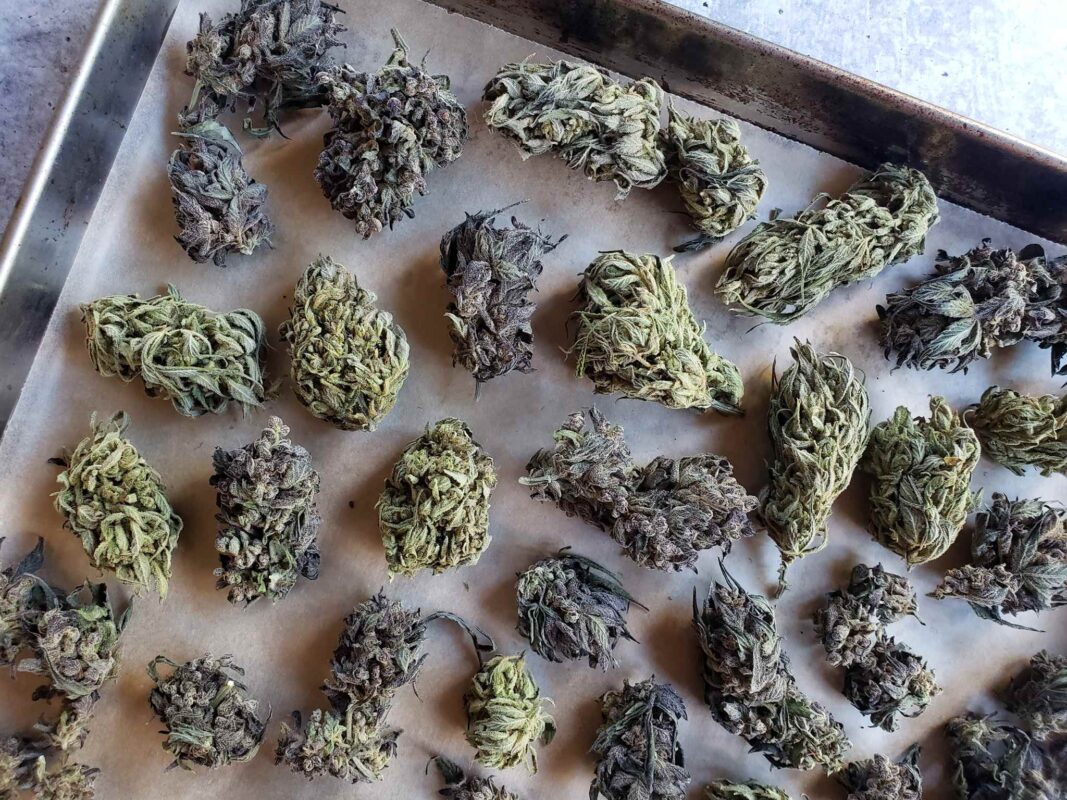Uncategorized
How to Decarb Cannabis: A Step-by-Step Guide
In this guide, we will delve How to decarb cannabis, exploring its significance in unlocking the psychoactive potential of cannabis and providing step-by-step instructions to ensure optimal results. Whether you’re a seasoned cannabis enthusiast or a curious newcomer, join us on this journey as we demystify the science and art of weed decarboxylation.
What Exactly Is Decarboxylation?
What is decarboxylation weed? It’s a process that activates the psychoactive elements within the cannabis plant, inducing the sensation of being high upon consumption. Within the cannabis plant lies THCA, which lacks psychoactive properties; however, to achieve the desired effect, THCA must convert into THC. This conversion is typically facilitated by heat, whether through the flame of a lighter, the atomizer of a vape pen, a torch in a dab rig, or even an oven when preparing edibles. Essentially, heat triggers the removal of an extra carboxyl ring from THCA’s chemical structure, a process known as decarboxylation.
How Does Decarboxylation Operate?
What is decarboxylation? Decarboxylation involves both heat and time. When weed is smoked or vaporized at high temperatures, its compounds quickly undergo decarboxylation, making them easily absorbable by the body. Furthermore, drying and curing homegrown cannabis after harvest also lead to some decarboxylation. Oxygen speeds up this process, so keeping weed in an airtight container helps maintain its freshness and potency by decelerating decarboxylation.
Decarboxylation is essential for edibles because it activates the cannabis compounds necessary to experience their psychoactive effects. While consuming edibles doesn’t involve direct heat like smoking or vaping, decarboxylation is still required to activate the cannabis within the edible before it can be effective.

The Necessity of Decarboxylation in Edibles
Decarboxylation plays a crucial role in the preparation of cannabis-infused edibles. Unlike methods like smoking or vaping, which apply heat directly, edibles rely on decarboxylation to activate the cannabinoids found in cannabis. Typically, cannabis buds undergo heating in an oven to initiate decarboxylation before being infused into substances like butter or oil. This infused mixture, now containing activated THC, serves as a key ingredient in various edible creations like brownies, cookies, and gummies. The pre-infusion heating process ensures that THC becomes active and can seamlessly integrate into the infusion and, consequently, into the final edible product.
What Temperature Triggers Decarboxylation in Cannabis?
Decarboxylation typically occurs between 200-245ºF. For edible preparation, it’s advised to heat the buds at 220ºF for 30-40 minutes. Unlike smoking or vaping, this method preserves cannabinoids and terpenes by using a lower temperature for a longer duration, preventing the loss of volatile terpenes that may result in undesirable flavors and aromas.
Exceeding 300ºF in oven heating risks the degradation of valuable cannabinoids and terpenes, rendering the infused product ineffective for achieving the desired psychoactive effects.
The temperature chart illustrates the rate of conversion from THCA to THC and CBDA to CBD at varying temperatures, as outlined in a study conducted in 2016.
| Acid/Cannabinoid | Temperature (ºF) | Temperature (ºC) | Time (in minutes) |
| THCA/THC | 230ºF | 110ºC | 30 |
| 265ºF | 130ºC | 9 | |
| CBDA/CBD | 230ºF | 110ºC | 45 |
| 265ºF | 130ºC | 20 |
What Are the Consequences of Excessive Decarboxylation?
Subjecting cannabis to prolonged or excessively high temperatures can result in the loss of cannabinoids and terpenes, diminishing its potency.
Is It Preferable to Grind Cannabis Before or After Decarboxylation?
It’s advisable to grind the cannabis before decarboxylation to enhance surface area and ensure uniformity, facilitating even decarboxylation throughout the batch.

How to Decarboxylate Cannabis in an Oven
When you are going to decarboxylate cannabis in an oven, it’s important to note that the oven’s temperature setting offers more of an average rather than an exact temperature. Ovens can vary by as much as 20 degrees, underscoring the need for vigilant monitoring of the cannabis. Should it begin to brown too rapidly or emit a burnt aroma, adjusting the oven temperature becomes imperative. For those engaging in regular cannabis cooking, acquiring an oven thermometer is recommended.
To commence the process, gather the requisite materials: a baking sheet, parchment paper or aluminum foil, an oven, and the cannabis itself. Preheat the oven to 220ºF, ensuring the oven rack is positioned in the middle to promote uniform heating. Line the baking sheet with parchment paper or foil, then distribute the cannabis evenly, either lightly fragmented or ground, to prevent scorching. Bake for 30-40 minutes, pausing to stir at least once during the duration.
Following baking, allow the cannabis to cool for 30 minutes at room temperature. It should adopt a gently toasted, golden-brown hue. Once cooled, the decarboxylated cannabis can be integrated into butter, oil, or another medium for infusion, or stored for future utilization in a suitable container.
Regarding the use of a microwave for decarboxylation, it is discouraged due to the challenges in effectively regulating temperature. Decarboxylating cannabis necessitates a gradual and controlled process, ideally accomplished through the dry heat of an oven. Alternatively, a compact toaster oven with adjustable temperature settings can serve as a viable option.


